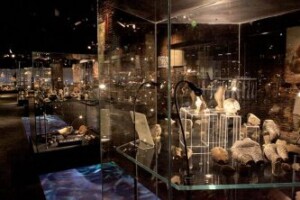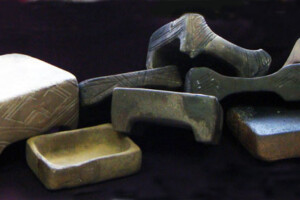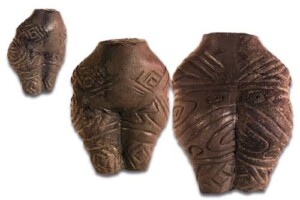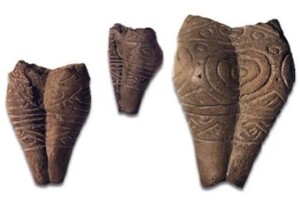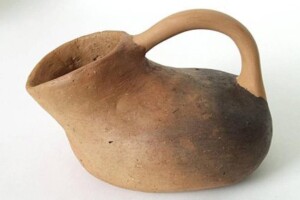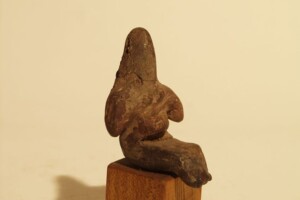
The Eneolithic or Copper Age covers the period from 4.200 to 2000 years BC. The first information about this period was obtained by archaeological excavations and investigations conducted over a period of more than sixty years. Then for the first time the Eneolithic settlement in the Skopje fortress was identified, which allowed us to state that the roots of Skopje lie in a continuous chronology from the fourth millennium BC until today. In Pelagonija the best known sites are: Shuplenec, Bacarno Gumno, Crnobuki, Visok Rid, Gorni Visoi, Krusheanska Cuka, and Tumba Karamani. In the Ohrid-Prespa region two settlements were explored: Ustie on Drim and Crkveni Livadi.
More recently the following Eneolithic settlements have been identified: in the Kumanovo region, Kostoperska Karpa or Zegligovski Kamen; in the Skopje region, Vranjak at the village of Varvara; in the Delcevo region, Gradishte near the village of Grad; in the Kocani region, Pilavo-Burilcevo and the sanctuary site near the church of St. Athanasius in the village of Spancevo. Archaeologists agreed that this regional cultural group in Macedonia would be named Shuplevec-Bacarno Gumno, which chronologically fits into the broader territorial framework, into the cultural complex Bubanj-Salkuca-Krivodol.
In the halls of the Archaeological Museum, from all the sites mentioned above, 300 exhibits are presented, which are the portable archaeological material. They include various ceramic vessels, tools made of copper, bone, stone, and flint, clay weights and vertebras, amulets, jewelry from shells, zoomorphic and anthropomorphic figurines, pintaderas and others. The documentation and the remaining material are kept in the museum.
Concerning the Eneolithic in Macedonia, many papers have been published in various professional journals, both national and international; basic information may be obtained from the Archaeological Map of Macedonia, numbers 1 and 2.
Irena Kolishtrkoska Nasteva, custodian advisоr
inasteva@hotmail.com



